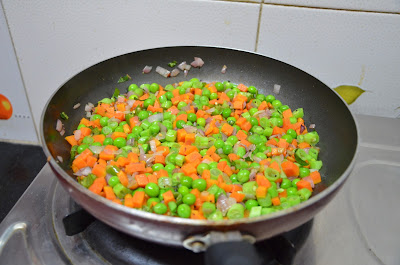Bottle
gourd is such a healthy vegetable: it helps digestion, it cools the body, it is
beneficial to skin and is mainly sought-after for weight loss. But I have never heard anyone call it a
favourite veggie; in my mom-in-law’s home they don’t even include it in anyway.
When we had Kundan’s cousin for lunch, I wanted to try this lauki kofta curry
as I thought that’s a cheering way to feed bottle gourd to people who abhor it
on plate. I’m not sure how far my guests or Kundan liked it but our maid
appreciated it pretty much.
Serves:
4
Preparation Time: 15 minutes
Cooking Time: 30 minutes
Ingredients:
1.
Bottle gourd – 1 small
2.
Gram flour – 3 tbsp
3.
Red chili powder – 2 tsp
4.
Salt to taste
5.
Lemon – 1
6.
Oil as required
7.
Cinnamon – 2 “ piece
8.
Cumin seeds – ¼ tsp
9.
Onion – 1 large
10. Tomato – 4
11. Coriander powder – 1 tsp
12. Cumin powder – ¼ tsp
13. Turmeric powder – ¼ tsp
14. Ginger garlic paste – ½ tsp
15. Almonds – 6-10 no.
16. Coriander – 2 tbsp chopped
Method:
Step 1:
Soak almonds in hot water.
Step 2:
Peel and grate the bottle gourd into fine shreds [I did a mistake by making
thick shreds; it made the kofta chewy even after cooking]. Add 2 pinches of
salt and leave aside for 30 minutes after which you need to squeeze out the
juice (save it for gravy) and take it in a mixing bowl.
Step 3:
To the grated bottled gourd, add gram flour, ½ tsp of chili powder, juice of
half a lemon, salt and mix well. Add more flour if required, roll into 2” balls
and deep fry them until golden brown.
Step 4:
For tomato gravy: grind the tomato and soaked almonds into smooth paste.
Step 5:
Heat a tbsp of oil in a pan, splutter cumin seeds, add cinnamon and sauté finely
chopped onion & ginger garlic paste in it until translucent.
Step 6:
Add tomato puree to it and sauté until the oil starts coming out. Add remaining
chili powder, turmeric powder, coriander powder, cumin powder, required salt
and sauté further for 2 minutes until the raw smell goes off.
Step 7:
Add 3 cups of water and let it boil in simmered heat and form thick gravy. It takes
around 15 minutes.
Step 8:
Transfer the gravy to a serving dish and drop in the crisp koftas; some people
like the koftas crisp and some like them soaked in gravy, serve as per preference.
Step 9:
Serve garnished with fresh coriander along with roti/ naan.
TIPS:
* Substitute cashew nuts for almonds if you wish the gravy to be creamy.


























